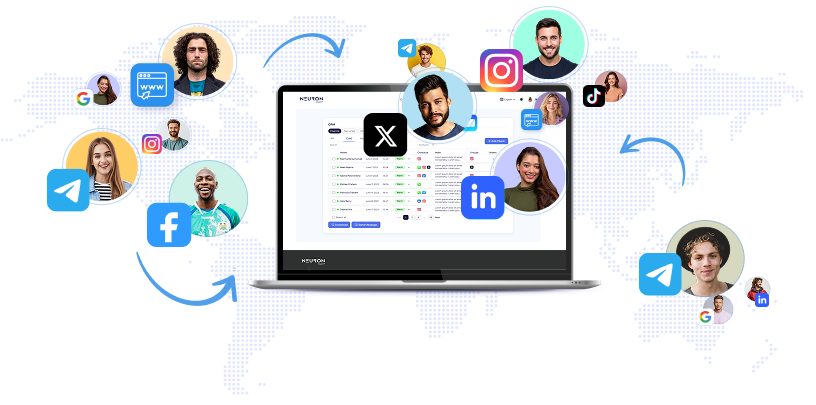
The advent of AI technologies has sparked unprecedented anxiety in the publishing industry, reminiscent of the early days of the world wide web. While it’s clear AI is reshaping how users interact with websites, the ultimate impact remains uncertain. Currently, AI has passed its hype peak, suggesting that although the bubble may burst soon, the industry won’t revert to any former “normal. ” Instead, a new post-bubble equilibrium will emerge, likely healthier overall, though some publishers may struggle or disappear. This article outlines four key survival strategies for online publishers to navigate this shifting landscape: 1. **Search Remains Vital** Despite claims to the contrary, search—especially Google—continues as the primary traffic driver, including for news sites. However, “Peak Search” has passed; Google’s overall click volume is no longer growing. Publishers with mature SEO strategies will find their search-driven audiences plateauing. Yet many publishers still have untapped SEO potential and can grow by enhancing editorial and technical SEO. Since the search traffic “pie” is now static, gaining clicks means taking them from competitors, making robust SEO more critical than ever. AI hasn’t caused the search plateau but accelerated existing trends like zero-click searches, intrusive snippets, fragmented user behavior, and algorithm shifts. AI enables users to access content without visiting sites, intensifying traffic challenges for publishers who rely heavily on Google. To combat this, Google has introduced features to foster audience loyalty, such as “Preferred Sources” in Top Stories, allowing users to prioritize specific news outlets. Publishers can encourage readers to select them as preferred sources, helping maintain visibility—though this may also enhance filter bubbles. 2. **Google Discover Is Expanding** While search levels off, Discover is growing considerably and often compensates for reduced search traffic. However, building a strategy solely around Discover has downsides: it encourages clickbait and sensationalism, traffic is volatile and highly susceptible to algorithm changes, and Discover is a Google-controlled feature that can be discontinued without consequence. Moreover, it lacks the regulatory oversight search faces. Nevertheless, publishers should optimize for Discover to some extent. Google recently added a “Follow” button in Discover, letting users follow publishers to see more of their content in feeds, promoting audience retention. Additionally, Discover will increasingly include social media content like YouTube, Instagram, and X (formerly Twitter) posts. 3.
**Embrace Multimedia Content** News consumption has been multimedia for years. With Discover integrating social posts, publishers should diversify formats and platforms: YouTube videos (especially Shorts), Instagram posts and videos, and podcasts—all of which have large, engaged audiences. Podcasts, in particular, rank highly and offer a direct connection to audiences. Email newsletters also remain an effective channel, enjoying renewed interest. Repurposing content across formats is low-barrier: a podcast episode can be filmed and converted into YouTube videos and Shorts, then shared on Instagram. Experimentation in multimodal content is crucial. Upcoming industry events like the NESS conference will focus on channel diversification strategies, including cracking the YouTube algorithm. 4. **Become Unforgettable** The most vital survival tactic is to cultivate a unique identity and loyal audience. Many news websites are interchangeable, resulting in fragile, habitual readership easily lost to competitors. Publishers often fail to grasp this due to a lack of honest audience insight. The solution: “Talk to your customers. ” Regularly engage readers to learn what they value, dislike, and want more of. Audience feedback guides strategic decisions—defining your unique selling proposition (USP), setting subscription pricing, selecting platforms and partnerships, and tailoring content. Tools like Sparktoro assist in audience research. Marketing, though sometimes stigmatized by publishers, is essential for transforming casual visitors into devoted followers. A loyal audience makes publishers resilient against future disruptive technologies and algorithm changes. **Regarding AI Optimization** Despite boardroom pressure to “optimize for AI, ” focusing on AI search or large language model optimization isn’t effective traffic strategy for content sites. While e-commerce or transactional sites may benefit from AI-generated visibility, news publishers see negligible click-through from AI citations. Good SEO and compelling audience connections inherently align well with AI optimization, so there’s no need to chase AI-specific tactics blindly. **Looking Ahead** The upcoming NESS 2025 conference includes sessions on AI’s impact on publishing; using code barry2025 offers a 20% discount. In summary, publishers must accept a transformed landscape where search traffic no longer grows, AI accelerates challenges, and audience loyalty is critical. By leveraging SEO skillfully, optimizing for emerging channels like Discover, embracing multimedia content, and fostering deep audience connections, publishers can thrive despite disruption. --- **Additional Resources:** - Interview on Google Discover, AI Mode, and publishing impact with John Shehata - Overview on Google AI’s effect and adaptation into 2026 - Analysis of AI in marketing (Originally published on SEO for Google News; featured image by Stokkete/Shutterstock)
4 Key Survival Strategies for Online Publishers in the AI-Driven Era


Advancements in artificial intelligence (AI) are transforming video content delivery, greatly improving streaming experiences for users globally.

MarketsandMarkets™, a global leader in market intelligence and advisory services, today announced the launch of MarketsandMarkets™ Sales IQ, an AI-powered sales assistant aimed at accelerating revenue growth for enterprise sales teams.

Giles Bailey, a 21-year-old Head Consultant at SMM Dealfinder, has been instrumental in the company’s rapid growth, helping the platform achieve over one million dollars in annual recurring revenue within just six months of launching.

Budget Drives Effectiveness Eight Times More Than ROI New IPA research by Les Binet and Medialab Group’s Will Davis reveals that advertising effectiveness is far more influenced by budget size than ROI

OpenAI has announced a major partnership with Broadcom to jointly develop custom artificial intelligence (AI) chips, marking a significant step in enhancing its AI infrastructure.

Google is rapidly transforming organic search results through its integration of AI.

For brands focused on growth in 2025, ranking high on search engines and AI platforms is essential, not optional.
Automate Marketing, Sales, SMM & SEO

and get clients on autopilot — from social media and search engines. No ads needed
and get clients today